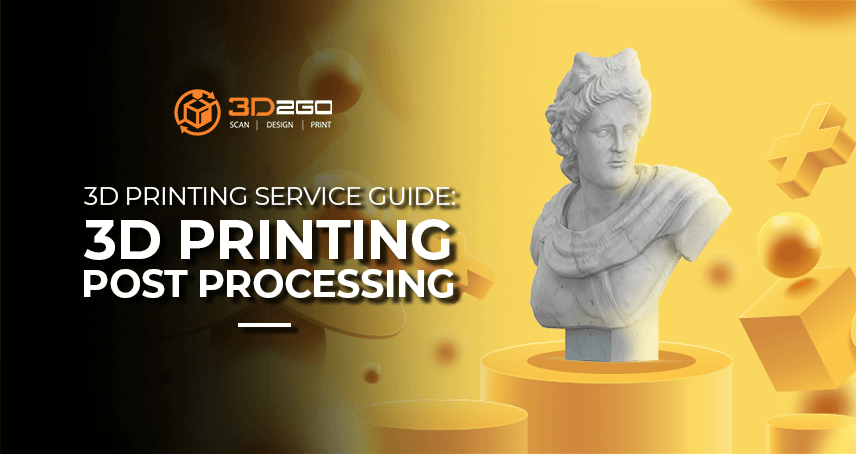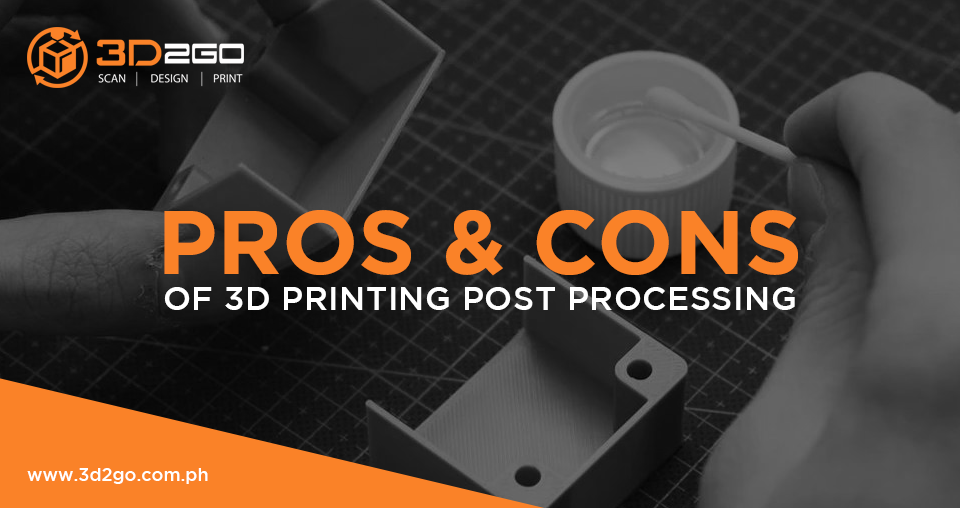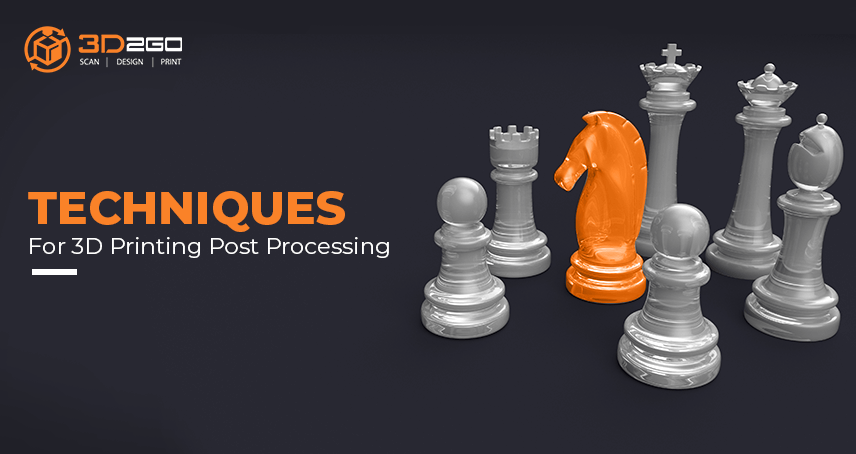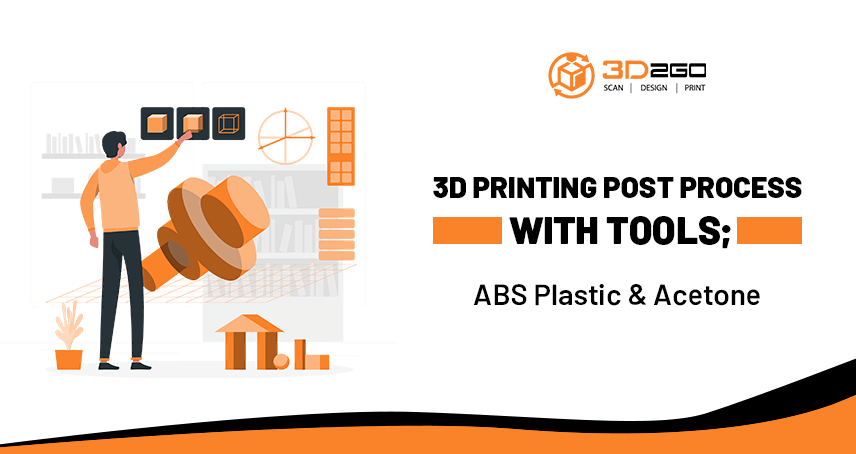
Three Must-Do in 3D Modelling in Civil Engineering
June 25, 2022
Choosing The Perfect Prosthetic Limbs
June 25, 20223D printing post-processing is the most crucial step in 3D printing, yet it is the most overlooked.
3D printing, or additive manufacturing, allows people to manufacture an object in three dimensions. It starts with a design and ends with post-production.
But why is post-processing essential to 3D printing?
In this article, we will discuss the definition and importance of 3D printing post-processing. We will also tackle various topics, such as the different 3D print finishing techniques and how to polish 3D printed items.
Defining 3D Printing Post Processing
3D post-processing refers to the process or task that enhances a 3D-printed object. By using different tools and techniques, you can improve the overall strength and aesthetic of your project.
Almost all 3D-printed items require some degree of post-production treatment. It is because of the excess extensions and loose edges that remain after it comes out from the 3D printer.
Post-processing requires plenty of time. For a product to look appealing, it must undergo a series of cleaning and prepping.
How to Finish 3D Prints
3D printing usually starts with a 3D model of an object. The model must be accurate to get a realistic print-out. Upon confirming the measurements of the project are correct, it is time to print it.
Printing a 3D model takes around 30 minutes to 7 days or more. Several factors dictate how long it takes to 3D print an item. These include the overall size and geometry of the parts, as well as the 3D printer used. Essentially, the larger the model, or the more complex it is, the longer it will take.
After ensuring that all aspects of the model are correct, the printer operator will forward it to the post-processing team.
The post-processing team must know the functionality and target appearance of the printed item. So to avoid compromising any vital part of it.
Moreover, they need to apply these different techniques to polish a raw 3D item:
1. Sanding
Sanding is the most common form of post-processing and the easiest way to smooth a printed item.
After printing, some parts of the project will have a few blobs left on its surface. Some may even have nasty marks. The ideal way of removing these blemishes is by using sandpaper.
It is always best to start with low-grit sandpaper and move towards the higher grit during the later stage.
One neat trick that few people do is wet sanding.
When you rub two objects together, it will generate heat. Sanding a printed material for too long might damage it. It is because of the heat-sensitive filaments usually used to print 3D items.
To avoid damaging the quality of a product, they damp part of the sandpaper before sanding. By doing so, the paper will absorb any excess heat.
Another tip with sanding is to do it in a circular motion.
Sanding parts in parallel or perpendicular to the layers could ruin the visual appearance of your project.
2. Gluing
Let us say you want to 3D print an enormous item. But due to the large dimension, it is impossible to print it in one go. So you need to print it parts by parts. Gluing helps in combining these parts into one.
PLA and ABS are good examples of materials that you can easily glue together.
3. Priming & Painting
This step comes after sanding and gluing the 3D item.
Priming is a post-processing technique used to prepare a surface for painting. It means coating the part with primer paint or spray to act as a base layer. And once the primer is dry, you can start painting.
Painting is the practice of applying paint. It sounds simple, but it is rather tricky as it requires patience and determination to get the colors right.
It is also the part where you can apply any special coating for your project. Though, always keep in mind to wear a mask to avoid inhaling fumes.
As you can see, it takes someone with discipline and attention to detail to finish a 3D-printed item. One needs to have prior knowledge about these different techniques to polish a raw 3D printed object correctly.
Even more so, it is equally essential to understand the material commonly used in 3D printing.
Differentiating PLA and ABS
ABS and PLA are both durable plastic materials. That is why it is the perfect filament for printing applications.
Since the two filaments are plastic, it also means that the materials melt when exposed to high temperatures. Although, not right away. It takes time to really turn these two things into a liquid substance.
Furthermore, ABS and PLA are not the same.
PLA or Polylactic Acid
PLA is biodegradable.
It is not suitable for making objects that will be outside or exposed to moisture. Over time rain, humidity or dampness will cause the PLA to melt or dissolve.
PLA can rapidly lose its structural integrity and can begin to droop and deform, particularly if under load, as it approaches 60°C.
One of the best things about PLA is that you can use it without a heated printer bed, unlike ABS. That is because PLA does not warp as easily as ABS and other thermoplastics do. Because you will get less warping with PLA compared to ABS, you don’t have to monitor your print as much or worry about having a high failure rate.
PLA is ideal for 3D prints where aesthetics is a priority. It is because of its lower printing temperature. It is smoother to use and to print with, so therefore it is better suited for parts with fine details.
ABS or Acrylonitrile Butadiene Styrene
On the other hand, ABS is a very popular filament for making objects that need to be durable.
Items made with ABS will generally last much longer than 3D things made with PLA, especially in functional applications. Such as when used to make electronics or mechanical parts.
Over the long term, ABS degrades in the sun, so keep in mind that it isn’t always suitable for making objects that will spend a lot of time outside.
But unlike PLA, ABS is mostly water-resistant and can be used to make objects that get wet often.
ABS is best suited for applications where strength, elasticity, and thermal stability are required.
Polishing ABS Plastic and PLA Plastic
Post-processing methods may vary from filaments to filaments.
Here is a simple DIY on smoothing your PLA and ABS 3D printed item. Let us start with ABS:
- Remove any excess material that you can from your print.
- Place paper towels around all four sides of a plastic container.
- In a well-ventilated area, sprinkle a small amount of acetone in the bottom of the container, and cover the bottom of your container with tin foil.
- Place your 3D print in the container, and allow to sit for several hours – until the print has smoothed to your liking.
- Remove your print, and allow it to sit for several minutes to allow the acetone to evaporate off of your print.
- Your print is smoothed ready for display!
For PLA, it is slightly different:
- Remove any excess material that you can from your print.
- Put on your non-latex gloves and locate your polishing cloth.
- In a well-ventilated area, dip the cloth in your THF (Tetrahydrofuran), and polish your print like you would polish a shoe – circular motions work well here.
- Let your polished print dry (while still in a well-ventilated area) to let any excess THF evaporate.
- Your print is looking much better than before now!
Anyway, you do not need to do this at all with the right 3D printing partner.
3D Printing Services in the Philippines
3D2GO can do the post-processing for you!
We would love to become a part of your project!
3D2Go is the only one-stop-shop for everything 3D printing in the Philippines. We offer end-to-end full-service that guarantees a top-quality end product.
Not only that, but we also supply 3D Printers if you want to print your own ideas as well.






